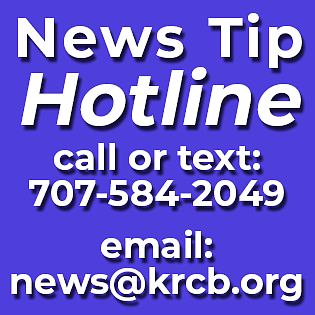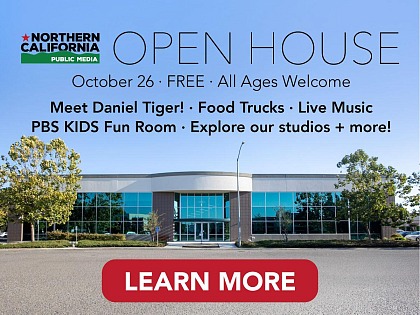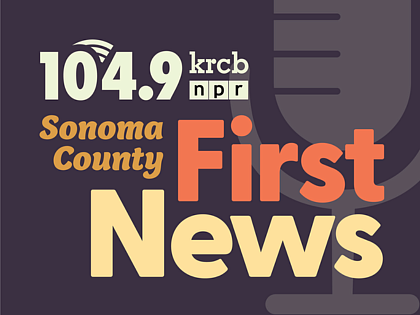 photo credit: Noah Abrams/KRCB
photo credit: Noah Abrams/KRCBCalFire firefighters conducting a large controlled
burn at the Pepperwood north of Santa Rosa in
October of 2022.
During our daily coverage of Sonoma County, we heard about a handful of canceled controlled burns last month and were left wondering why. Was it rain? Too windy? Complaints from neighbors? To find answers, KRCB News spoke with one local fire official.
Autumn rain can be a welcome sight, a sort of safe harbor that signals “no big fire this year.” Or maybe you just enjoy the pitter-patter of a passing shower. But if you’re in the business of fire fighting, as is Ben Nicholls, sometimes the rain is the last thing you want to see.
“We are now roughly a little over an inch of rainfall,” said Nicholls, division chief with CalFire’s Lake-Sonoma-Napa Unit. “Each of those storms with the associated cool weather that we've been having, have allowed the annual process of that green up of the grass.”
He says rain can sometimes be CalFire’s foe when it comes to preventing catastrophic wildfires. That's by drenching landscapes and helping to sprout too much fresh greenery in areas that might otherwise be ready for a controlled burn to safely singe away combustible vegetation.
“The nuances of these prescribed burns in the fall is trying to time them with conditions that are not going to create the potential for a fire escape, but at the same time be able to be conducted before that green up occurs,” Nicholls said.
Fall can be a tricky time for prescribed burns.
“It may be that there's a forecasted rain event, the forecast or the conditions change, maybe you do get a little bit of rainfall, but then without fail, behind that rain more times than not is an offshore wind pattern that creates those, those critical burning conditions,” Nicholls said.
That weather whiplash is precisely what we experienced at the end of October - a small pocket of rain on October 22, followed by a red flag warning for critical fire weather just a week later.
And in wet years like we’re experiencing now, everything can get pushed back. Grass stays green later, plants bloom later, harvests happen later, Nicholls said.
“This fall was a uncommon occurrence where because of the late growing season, grapes that otherwise would've already been off the vine a month earlier, were still waiting to be harvested,” Nicholls said.
That wait meant harvests this year knocked up against conditions fit for controlled burns.
“There is a concern in the vintner industry about impacts of smoke and the possibility of smoke taint to grapes,” Nicholls said.
And it was that mix of rainfall and concerns for ripening grapes that put the pause on a handful of October controlled burns.
Another local fire expert notes many in the grape growing community value and support controlled burning, but after multiple challenging years they say growers are wary of anything affecting their harvest; and that dialogue with neighbors is an important part of the work.
Nicholls said in his considerations, the grapes are just one of many “sensitive receptors” vulnerable to smoke.
“Historically, that would've been, say, a care facility where you had medically impacted patients or perhaps a school,” Nicholls said.
California has a goal of treating 400,000 acres annually with controlled burns by 2025. Finding a way to balance the needs of the local economy, the health of local residents, and the weather is all part of the complicated equation for Nicholls.
He said especially in the mixed landscape of Sonoma County.
“It is definitely a juggling act to meet all of those different parameters, which is why prescribed burning is so difficult here in Sonoma County,” Nicholls said.

 Live Radio
Live Radio




